Introduction
Instruction for domestic property following and escape of water, we were to perform trace and access to identify the leak, assess both buildings and contents and advise the insurer and policy holder of the most effective mitigation and drying programme.
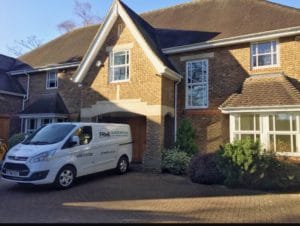
Key Information & MI
Instruction received: 15:33 pm 29 October
Contact by phone & email with policy holder: 15:45 29 October
Technician booked: 11:00 2 November
Trace & Access report sent: 5 November
External contractor fixed pipe: 10 November
Scope of works & estimate sent on 13 November
Works begin/schedule of works sent on 7 December (start date at policy holder request)
We attended the property on 02 November to carry out our initial scope, assess the damage, Trace and Access & leak detection if required. Full trace and access including gas tracing was required to identify the leak. Prime provide direct Leak Detection services
Damage present
Little visible damage, some weeping valves on radiators.
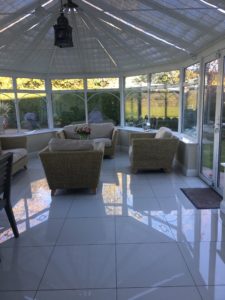
A Thermal imaging survey, salts testing, and gas trace were conducted in the property identifying an anomaly under the tiles within a conservatory. As well as identifying underfloor heating pipes large cold anomalies were found, suggesting significant volumes of water were present.
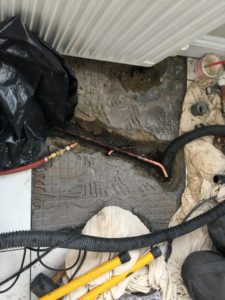
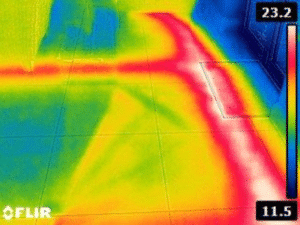
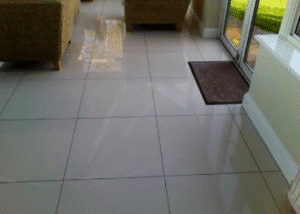
Although not visible from the surface the extent of the damage was on a large scale. Pictures above show saturated sub floor.
All other pipe work was tested, and floor construction identified to exclude from further causes of moisture.
Key factors identified
- Floor construction; slab, concrete screed, adhesive and tile
- Tiles run throughout property and match. Loss adjuster made aware of potential necessary damage for access purposes
- Drying method identified – Target drying under false floor – air exchanges possible and no potential issues with heat management
- Risks/ challenges identified – Policy holder wishes to use area over Christmas as has a relative in a wheelchair
Preparation & cost required/authorised
Estimate produced for pack and removal of contents, strip out of floor coverings to screed, then a unique false floor laid to allow drying of the slab and use of the area over Christmas
Schedule of works
Issued on day strip out works began following removal of contents. Giving estimate of drying timeline and expected communication dates.
Issued to Surveyor, Loss adjuster & Policy holder (if requested)
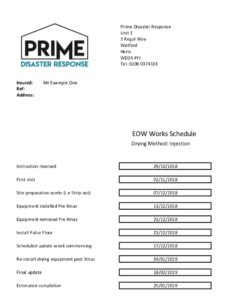
A Prime approved removals company were appointed to pack and store the contents of the property ready for us to begin a strip out program.
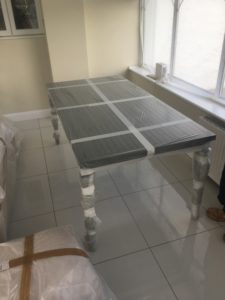
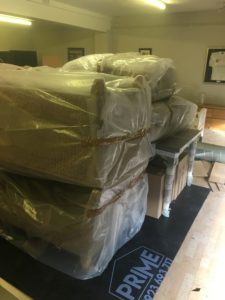
Protection of the building is paramount in terms of making sure the utmost care is taken to avoid further damage but also giving confidence to the policy holder. Using correx and screening off areas to avoid dust from moving around the property.
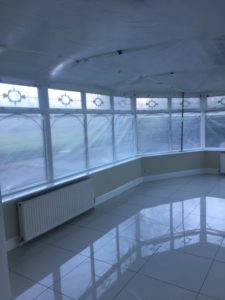
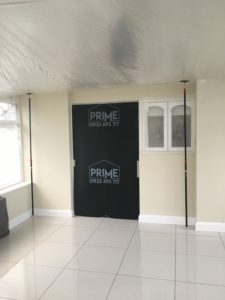
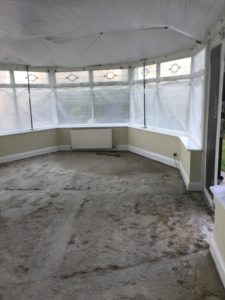
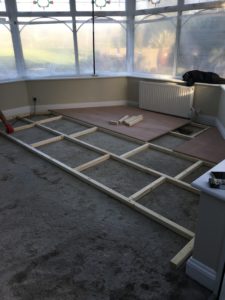
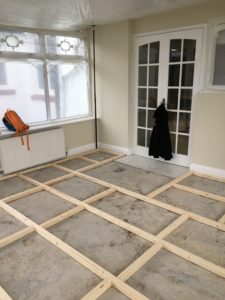

Batons were laid for support
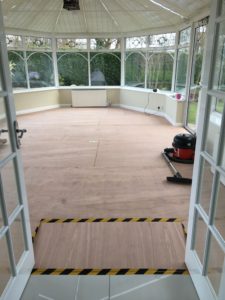
A ramp was installed for access
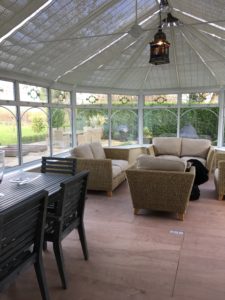
Furniture replaced and all protection removed
We then move to ‘target drying’ where warm dry air is forced under pressure into the sub floor. Moisture is then monitored.
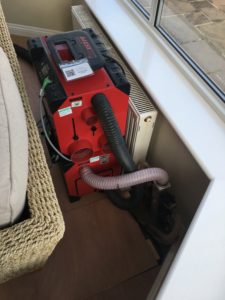
Warm dry air focused on the sub floor
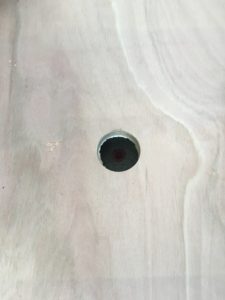
Inspection/monitoring holes
Remote monitoring and measurements
Once drying had begun, we installed ‘remote monitoring’, this allows us to monitor the drying progress of a property and alter the settings on the equipment at any time remotely.
Measuring relative humidity, specific humidity, and temperature allows us to ensure we are in full control of the job. Moisture levels are measured not only in the specific materials we are drying but also the ambient conditions to ensure we are creating and maintaining a good drying environment
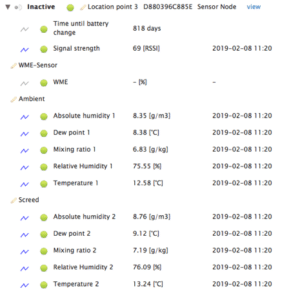
The figures above are explained as follows
- Screed – We are looking at the measurement specific to the slab by the leak
- Ambient – are the readings in the air above the floor
- Once the grams per kg of moisture in the air out is within an acceptable range, or in balance between air in and air out, we know we are getting to a state of equilibrium (dry)
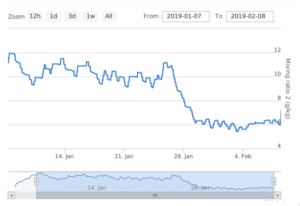
Using the technology, we are able to monitor a wide variety of factors that are critical to drying, such as temperature and humidity.
The above visual aid shows the end of a process where the equipment is turned off and the property is ‘rested’ prior to us leaving site. This time is critical as will identify if we have reached the level of dryness required OR if some areas require further drying. It is also an opportunity for previously unidentifiable non-related issues to be identified and highlighted.
The remote system also allows us reduce visits required on some claims. An example – being able to remotely lower the fan pressure or turn off/on equipment reducing sound pollution on an evening rather than a policy holder turning equipment off.
Performance/Timeline
Instruction – Contact with policy holder under 15 minutes
On site performing leak detection/gas trace & full scope and assessment within 4 days of instruction (policy holder led)
Project manager/claim manager appointed and visited policy holder with scope of works required (once authorised)
On site for strip out to leaving site dry – 7 weeks
Our decontamination and drying estimate – 28 days, final figure 29 days including rest week
Conclusion
The above project highlights our capability to offer multiple services (communication, response, leak detection, trace and access, removals, strip out & drying) efficiently and in their entirety.
The project above ran as smoothly as can be hoped for. There are many risks to the above timeline being effectively played out, such as temperature, control of humidity in a property and ease of working relationship with the policy holder.
Sometimes projects can be put off course by unforeseen factors such as pre-existing issues or third-party interference.
Using the above technology and our approach to communication/management of expectations, these risks are minimised.
